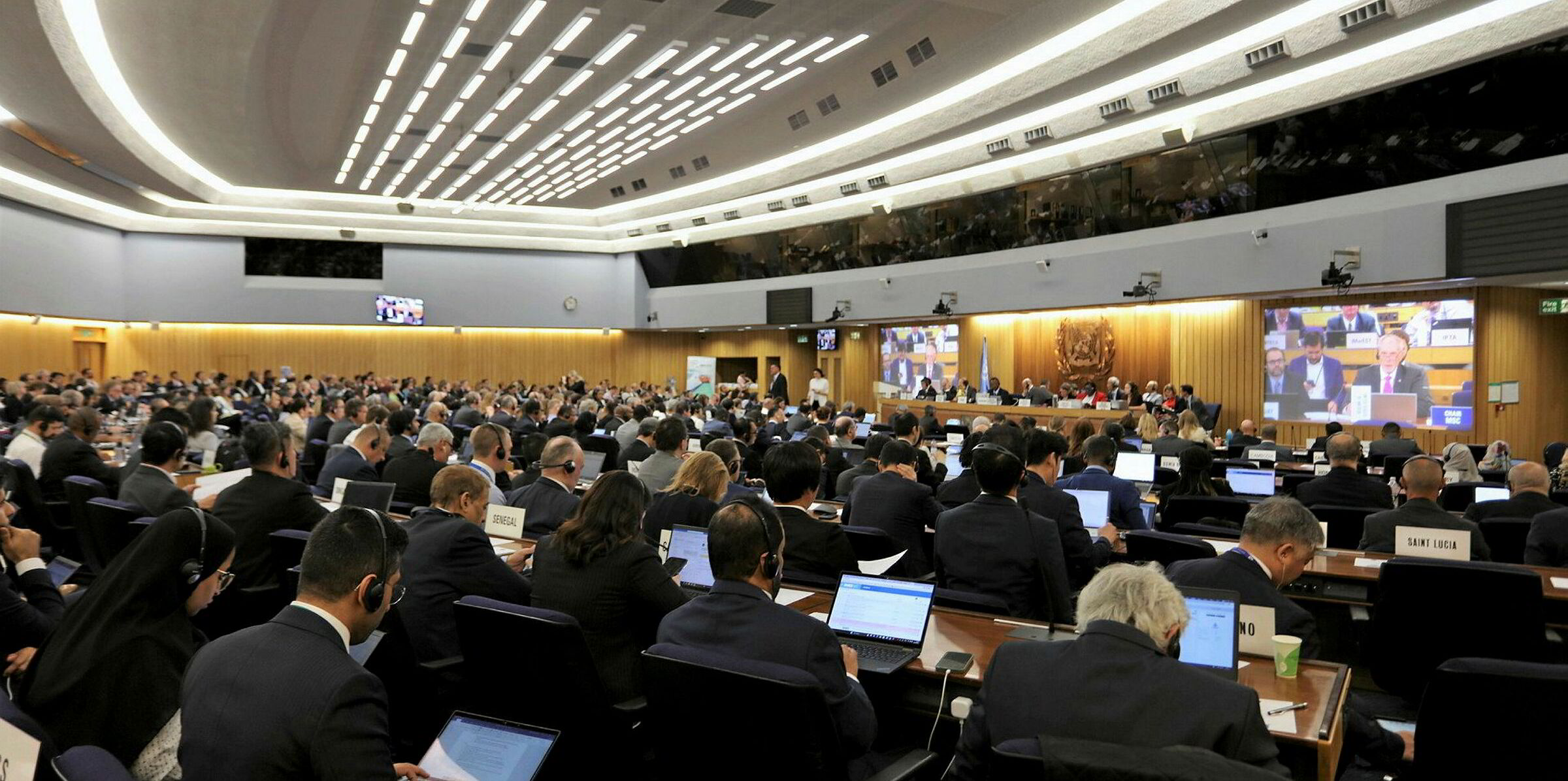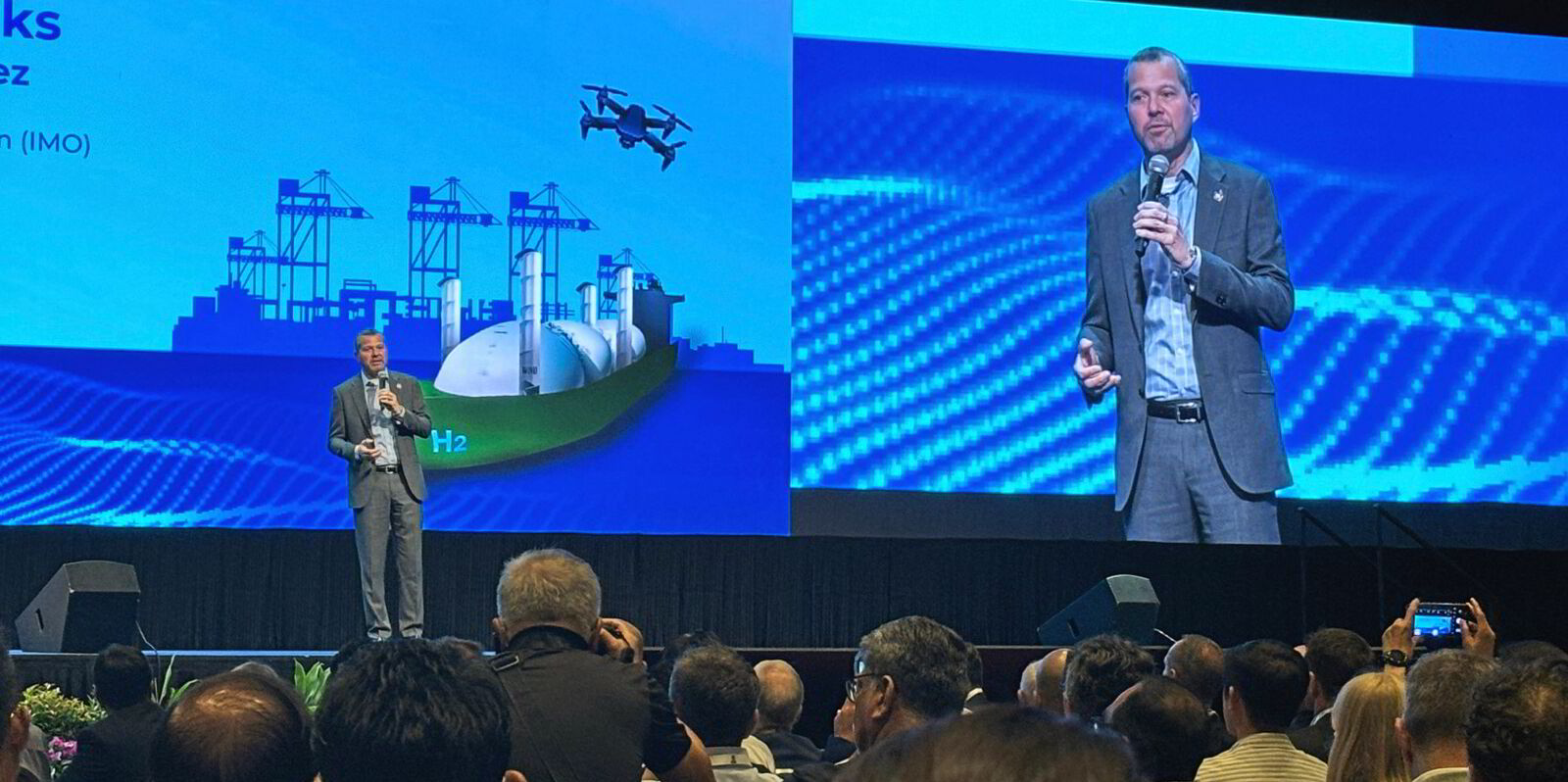A week of climate talks at the International Maritime Organization has ended without a breakthrough on an economic regulation aimed at reducing carbon emissions.
According to delegates who spoke to TradeWinds outside the closed-door discussions, the stalemate is expected to persist as negotiations move to secretive working groups next week during the Marine Environment Protection Committee, focusing on a proposed market-based measure to curb greenhouse gas emissions.
The MEPC is under pressure to agree on the design of a measure that will push shipping to meet the targets laid down by the IMO’s climate plan, which was agreed a year ago. This includes giving the industry a 40% reduction in CO2 intensity and the uptake of 5% to 10% of low or zero-emission fuels by 2030.
The tight time frame means there needs to be something close to a consensus in a week for delegations to take a proposal to their home governments and have a final agreement when the MEPC meets again in April 2025 and for an extraordinary meeting in October 2025, with the agreed measure then coming into force in 2027.
Sources told TradeWinds that the number of countries backing a type of carbon levy has risen to 39, up slightly from before this week’s meeting. The levy could also be implemented as a feebate mechanism, combining fees with subsidies.
Fifteen countries are not in support of a levy. These nations prefer a mechanism based on limiting the CO2 intensity of fuels and the possibility of a pooling and trading mechanism.
This measure has been compared to the European Union’s FuelEU Maritime regulation, which sets a clean energy threshold for vessels to meet and give credits if they exceed it by using green ammonia, for example. FuelEU also has penalties if they are under because the vessel is inefficient and uses traditional hydrocarbon fuels.

It is also a measure that raises less revenue for decarbonisation or mitigation funds than the levy.
The supporters of this greenhouse gas fuel intensity mechanism include the majority of the world’s oil-producing nations and the BRIC countries of Brazil, Russia, India and China. Norway has also supported this mechanism.
The supporters of a feebate or levy include most European countries, many developing and less-developed countries, and some small island developing states. During this week’s meeting, some African developing states also aligned themselves with the levy.
“The concept of a universal GHG contribution by ships per tonne of CO2-equivalent emitted remains firmly on the table, with strong support from a clear majority of IMO member states,” the International Chamber of Shipping, which has put forward its own proposals based on a feebate, said in a statement that referred to greenhouse gas by its acronym GHG.
“There is broad agreement, as advocated by the shipping industry, about the need to reduce the cost gap with conventional marine fuel oil to incentivise a rapidly accelerated uptake of zero/near-zero GHG fuels, so that achievement of net-zero emissions by or close to 2050 remains plausible and possible.
“Notwithstanding this strong support for a universal GHG contribution or something similar, the International Chamber of Shipping acknowledges the legitimate questions about this form of maritime GHG emissions pricing mechanism among some governments such as China and Brazil.”
Member states have yet to begin publicly showing compromise, although during this week’s climate meeting huddles of delegates were seen around the IMO building and restaurants in deep discussion.
Delegates are expected to work towards reaching a consensus on a single measure, potentially merging elements of the current proposals.
One key issue yet to be addressed, but slated for discussion next week, is how the generated revenue will be allocated.
Both the levy proposal and the fuel mechanism will raise revenues that can be ploughed into shipping.
According to DNV in its impact assessment of the proposals, the levy would generate far more than the fuel mechanism, with revenues ranging from $17bn to $127bn. There are proposals for a fund management mechanism either run by the IMO or a third-party organisation.





